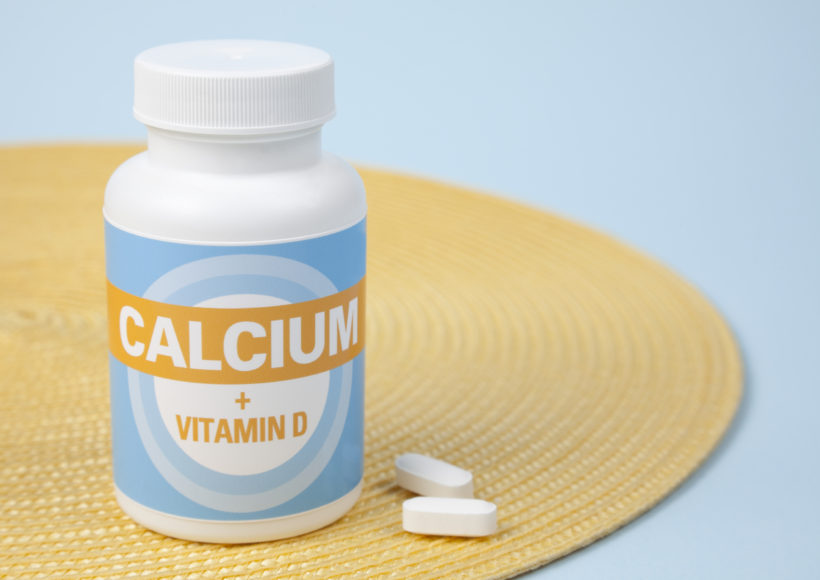Source: Thailand Medical News Dec 21, 2019 6 years, 3 days, 17 hours, 39 minutes ago
Thailand Supplements
A new study by the University Of Oxford shows that taking
Vitamin D alone does not prevent bone fractures. Instead older individuals have to take both
calcium and V
itamin D together to see actual effects of curbing the risk of a
bone fracture, the new study concludes.

The detailed analysis of 28 past studies found that older adults with higher blood levels of
vitamin D were less likely to suffer a broken hip or other fracture over five to 15 years.
The results were different in studies that actually tested the effects of using
vitamin D supplements: They found no evidence that
vitamin D alone reduced older adults' risk of
bone fractures.
But trials that tested a combination of
calcium and
vitamin D showed modest protective effects.
Senior researcher Dr. Robert Clarke, a professor of epidemiology and public health medicine at the University of Oxford in England told
Thailand Medical News, "Combined treatment with both
calcium and
vitamin D reduced the risk of hip fracture by one-sixth, and was more beneficial than taking standard doses of
vitamin D alone."
The study findings, were published in
JAMA Network Open, are not the final word on
vitamin D and
bone fractures. Some ongoing trials are testing high-dose
vitamin D in people who are at increased risk of bone breaks. But for now, there's no proof that it works, according to Clarke.
Globally about 320 million people have low bone mass or outright osteoporosis, the brittle-bone disease that can lead to
bone fractures. It's estimated that after age 50, half of women and one-quarter of men will break a bone due to osteoporosis.
Typically,
calcium is critical to building and maintaining strong bones, while
vitamin D helps the body absorb
calcium and supports the muscle function needed to avoid falls.
However when it comes to preventing
bone fractures in people with osteoporosis, there's only so much that
supplements can do, said the NOF's Beth Kitchin. She was not involved with the study.
The expectation that
vitamin D and
calcium, alone, will prevent
bone fractures is probably unrealistic. To help preserve bone mass and keep muscles strong, people need regular exercise. Exercise that makes the body move against gravity while staying upright like jogging, jumping rope or dancing can help maintain bone density. And exercise that builds muscle strength or imp
roves balance can help lower the risk of falls.
Also, avoiding smoking and excessive drinking is critical to preventing bone loss.
Whenever osteoporosis is diagnosed, medications which either slow bone breakdown or boost bone formation may be necessary. "Fall-proofing" your home is another important step. That means getting rid of tripping hazards inside and outside the house; installing grab bars in bathrooms; and keeping stairways well lit, among other measures.
Dr Clarke's team analyzed various studies, of which 11 were observational. They followed older adults in the "real world," tracking
bone fracture rates anywhere from five to 15 years. Overall, the higher a person's blood levels of
vitamin D were at the outset, the lower the risk of
bone fracture. But that doesn't prove cause and effect. High
vitamin D levels can be a marker of something else. Few foods contain
vitamin D. Instead, the body synthesizes it when the skin is exposed to sunlight.
The study review also included 11 trials testing
vitamin D alone, and six testing
vitamin D and
calcium. Study participants' average age ranged from 62 to 85, and they were followed for up to five years.
On the whole, people given
calcium and
vitamin D had a 16% lower risk of hip fracture than those given placebos or no treatment. Their risk of any bone break was 6% lower.
In order for a person to evaluate whether they should take
supplements, they could ask a doctor to measure their blood levels of
vitamin D, to detect any deficiency. As for
calcium, one should take a look at their diets. If they not eating much dairy, green vegetables and foods fortified with calcium, they might need a
supplement.
Adults younger than 51 should strive for 1,000 mg of
calcium a day; after that, the recommendation goes up to 1,200 mg. As for
vitamin D, people younger than 50 should get 400 to 800 international units (IU) per day, while older adults need 800 to 1,000 IU.
The recommendations on
vitamin D does vary with some groups recommending more. However, the Institute of Medicine states that the safe upper limit of
vitamin D is 4,000 IU per day for most adults.
Reference : The National Osteoporosis Foundation has more on calcium and vitamin D.
Pang Yao et al. Vitamin D and Calcium for the Prevention of Fracture, JAMA Network Open (2019). DOI: 10.1001/jamanetworkopen.2019.17789
